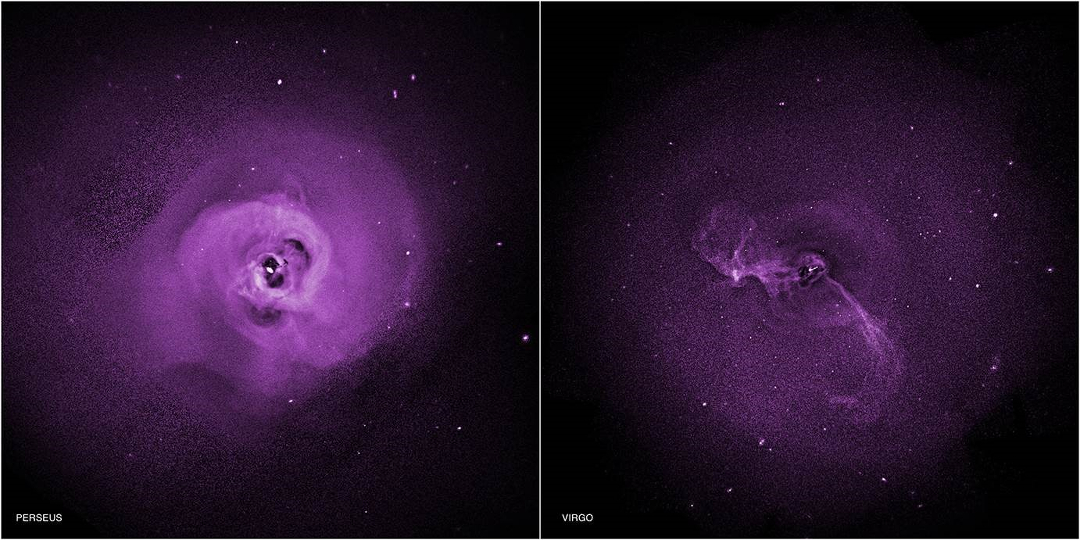
 Credit: NASA/CXC/Stanford/I. Zhuravleva et al
Credit: NASA/CXC/Stanford/I. Zhuravleva et al
Keeping Things Hot
An enormous cosmic mystery may have been solved. Astronomers have known for decades that clusters of galaxies, congregations of hundreds or thousands of galaxies gravitationally held together by dark matter, were immersed within enormous pools of hot gas that can be readily seen by X-ray telescopes. This X-ray emitting gas contains the major fraction of normal matter in the Universe. But galaxy clusters are ancient things, and so the hot X-ray emitting gas should eventually cool, and even form dense cold flows out of which enormous numbers of stars could form. But for some reason this doesn't happen. What keeps things hot? Detailed observations of the spatial distribution of the hot gas as seen by the Chandra X-ray Observatory may point the finger to the heating mechanism. Chandra X-ray data were used to determine the properties of the hot gas around two clusters of galaxies, the Virgo cluster, and the Perseus cluster. The variation of the hot gas pressure suggests that chaotic motions of the gas, or turbulence, provides enough heat to the intercluster gas to keep it hot for billions of years. This turbulence is believed to be produced by the interaction of the hot gas with giant cavities blown by supermassive black holes in the centers of some of the galaxies in the cluster.
Published: November 3, 2014
<
HEA Dictionary ● Archive
● Search HEAPOW
● Other Languages
● HEAPOW on Facebook
● Download all Images
● Education ● HEAD
>

Each week the HEASARC
brings you new, exciting and beautiful images from X-ray and Gamma ray
astronomy. Check back each week and be sure to check out the HEAPOW archive!
Page Author: Dr. Michael F. Corcoran
Last modified Monday, 26-Feb-2024 17:34:41 EST


